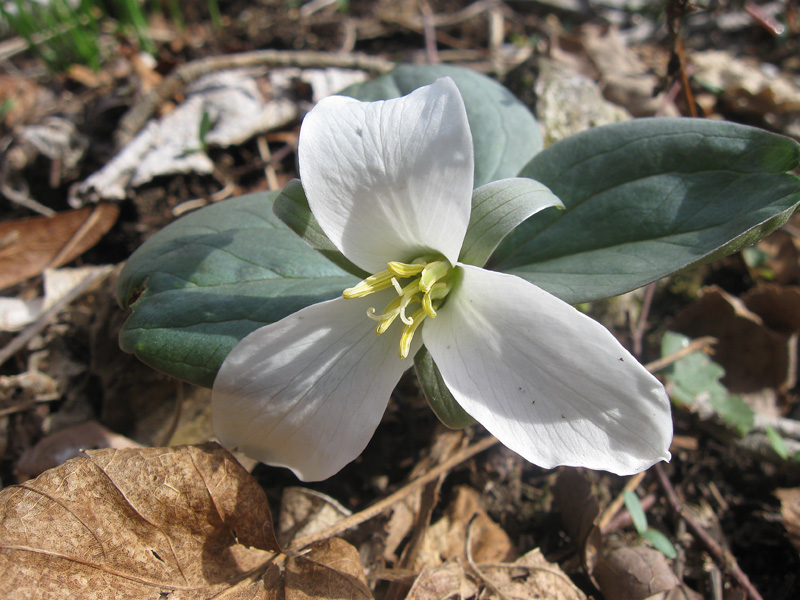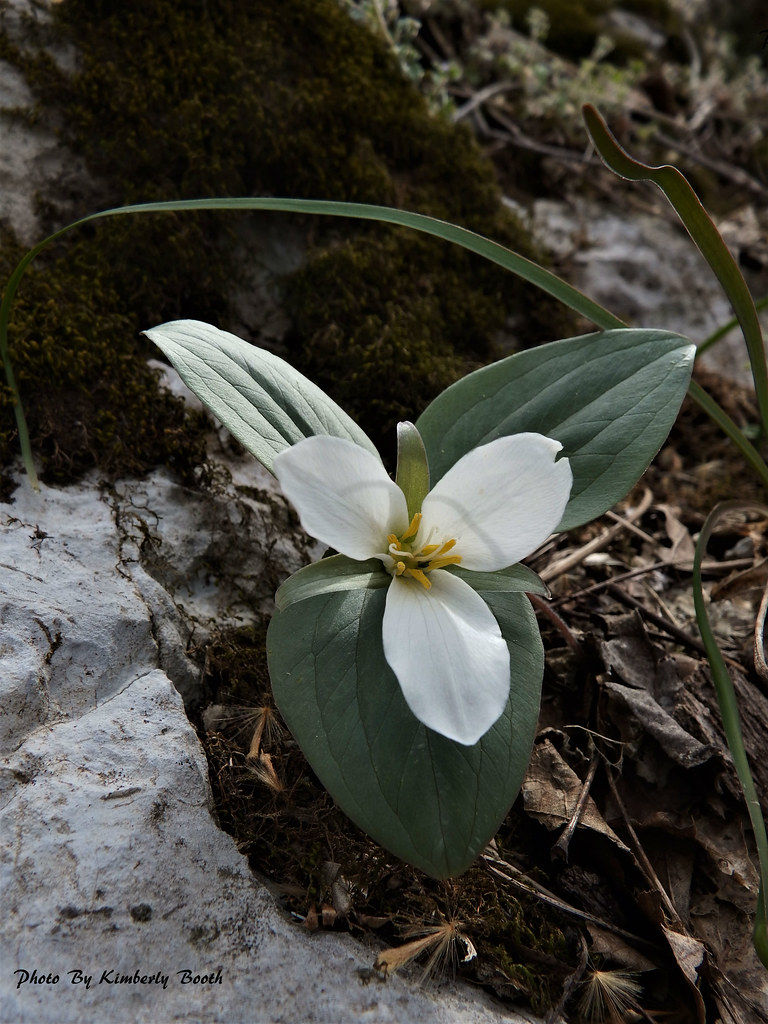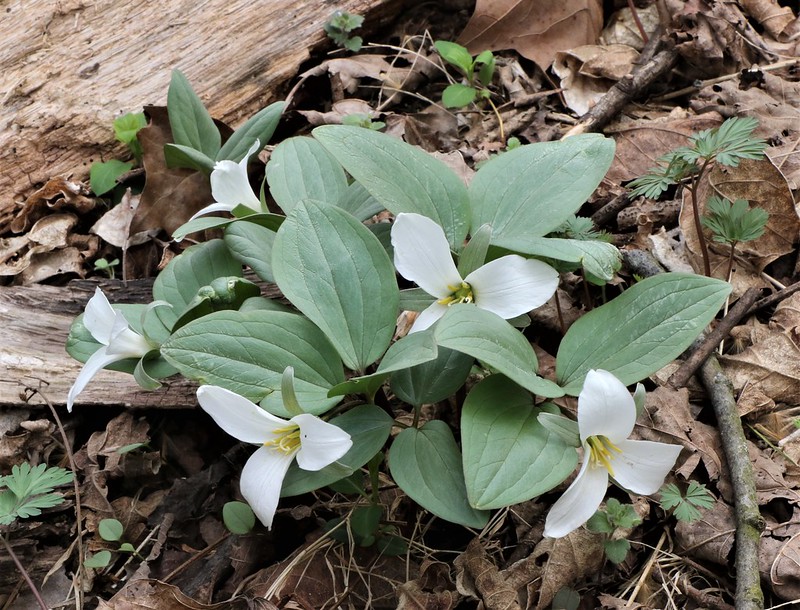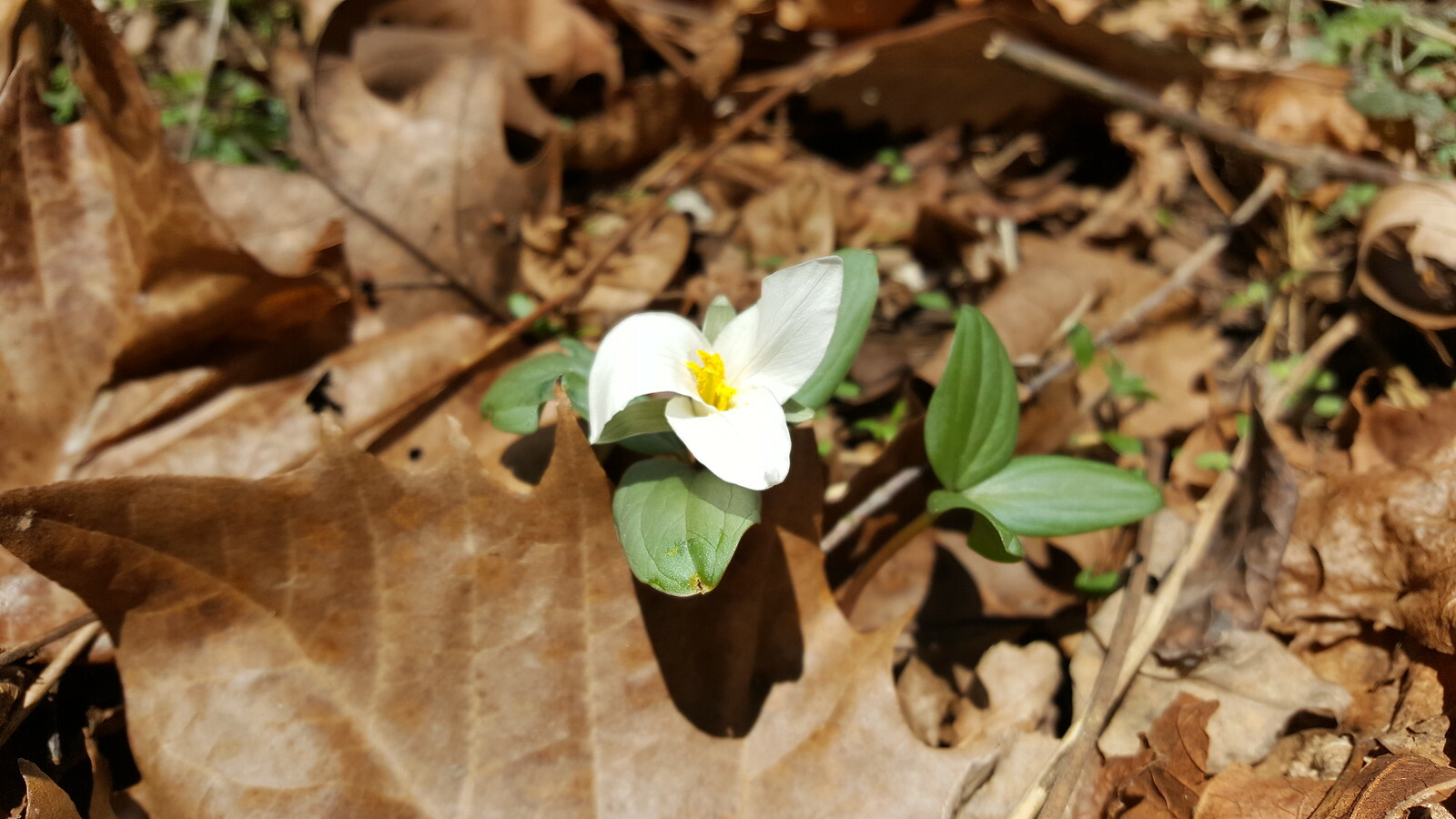Map Snapshot



36 Records
Status
Snow Trillium is a diminutive, long-lived, woodland perennial that occurs mainly in the Midwest, with outlier populations in other states, including Maryland. Throughout its range, Snow Trillium is uncommon and can be very rare. It blooms in late winter or early spring, sometimes while snow is still on the ground. In Maryland, Snow Trillium is known only from the western part of the state.
Description
Like all Trillium species, Snow Trillium has rhizomes and produces no true leaves or above-ground stems. The flowers occur singly, off the rhizome. The leaflike structures that subtend the flower are actually bracts. These are photosynthetic and are commonly referred to as leaves.
Where To Find
Snow Trillium is not found in places that have leaf litter or much plant competition.
Relationships
The seeds of Snow Trillium are dispersed by ants, as are all Trillium species.
Seasonality Snapshot
Source: Wikipedia
| Snow trillium | |
|---|---|

| |
| T. nivale in bloom in Paint Township, Ohio | |
| Scientific classification | |
| Kingdom: | Plantae |
| Clade: | Tracheophytes |
| Clade: | Angiosperms |
| Clade: | Monocots |
| Order: | Liliales |
| Family: | Melanthiaceae |
| Genus: | Trillium |
| Species: | T. nivale
|
| Binomial name | |
| Trillium nivale Riddell, 1835
| |
Trillium nivale, the snow trillium[3] or dwarf white trillium, is a species of flowering plant in the family Melanthiaceae. It is native to parts of the east and midwest United States, primarily the Great Lakes States, the Ohio Valley, and the Upper Mississippi Valley, as far north as central Minnesota.[4][5][6]
Trillium nivale is a perennial herbaceous plant that flowers late winter or early spring, occasionally while snow is still on the ground.[7] Along the Ohio River valley, flowers may be seen in early March. At its northern limit in Minnesota, it blooms in early April.[8] Along with the eastern skunk cabbage (Symplocarpus foetidus), T. nivale is one of the earliest flowering spring ephemerals.[9] Given its winter hardiness, one would expect the range of T. nivale to extend farther north, but curiously this is not the case.[10]
Soon after pollination the pedicel turns downward, so that by the time the fruit is mature, it is hanging below the leaves. In June, the seeds are shed and the entire portion of the plant above ground suddenly disappears. The seeds are dispersed by ants, which may account for the low genetic diversity reported in some plant populations.[6][10]
Trillium nivale is smaller than many of the other species in the genus, seldom reaching a height of more than 9 cm (3.5 in). Unlike most trilliums, it does not grow in leaf mold, preferring limy sandy gravel, crevices in limestone, or calcareous mineral soil.[8]
Like other Trillium species, T. nivale has a one-leaf vegetative stage followed by a three-leaf vegetative (juvenile) stage. After twelve or more years of vegetative growth, the plant finally reaches its three-leaf reproductive (flowering) stage. In some populations, there may be ten or more one-leaf plants to each flowering plant. The latter has an indefinite life span of many years, often living for decades.[6][10]
Bibliography
[edit]- Case, Frederick W.; Case, Roberta B. (1997). Trilliums. Portland, Oregon: Timber Press. ISBN 978-0-88192-374-2.
References
[edit]- ^ "Trillium nivale". NatureServe Explorer. NatureServe. Retrieved 16 November 2021.
- ^ Meredith, C.R. (2020). "Trillium nivale". IUCN Red List of Threatened Species. 2020: e.T146086666A146089275. doi:10.2305/IUCN.UK.2020-2.RLTS.T146086666A146089275.en. Retrieved 30 October 2022.
- ^ NRCS. "Trillium nivale". PLANTS Database. United States Department of Agriculture (USDA). Retrieved 15 December 2015.
- ^ "Trillium nivale". World Checklist of Selected Plant Families (WCSP). Royal Botanic Gardens, Kew.
- ^ "Trillium nivale". County-level distribution map from the North American Plant Atlas (NAPA). Biota of North America Program (BONAP). 2014.
- ^ a b c "Trillium nivale Riddell (Snow Trillium)". Minnesota Department of Natural Resources. Retrieved 18 November 2019.
- ^ Stritch, Larry. "Snow Trillium (Trillium nivale)". United States Forest Service. Retrieved 7 October 2019.
- ^ a b Case Jr., Frederick W. (2002). "Trillium nivale". In Flora of North America Editorial Committee (ed.). Flora of North America North of Mexico (FNA). Vol. 26. New York and Oxford: Oxford University Press – via eFloras.org, Missouri Botanical Garden, St. Louis, MO & Harvard University Herbaria, Cambridge, MA.
- ^ Case & Case (1997), p. 110.
- ^ a b c Martin, John N. (1935). "The Distribution and Life History of the Trillium nivale Riddell". Proceedings of the Iowa Academy of Science. 42 (1): 49–54. Retrieved 25 October 2019.
External links
[edit]- Citizen science observations for Trillium nivale at iNaturalist
- Biodiversity Information Serving Our Nation (BISON) occurrence data and maps for Trillium nivale
- "Flower-Visiting Insects of Snow Trillium". Illinois Wildflowers. Retrieved 15 December 2021.





